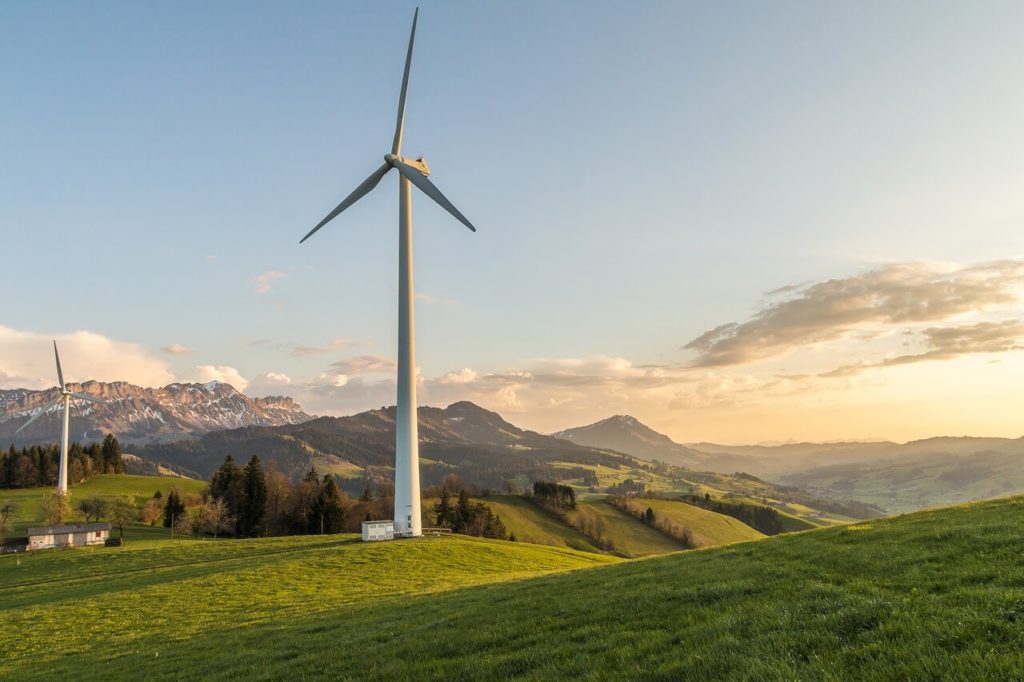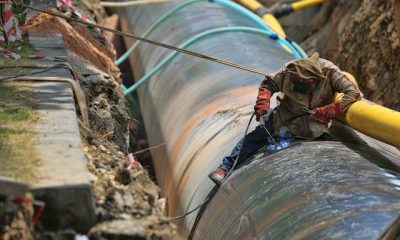Business
Wind power over open oceans can meet world’s energy needs—can we harvest it?
The ocean’s wind energy can provide civilization-scale power—if we have the technology for it.

There is a huge potential to generate wind energy over some oceans, which would be enough to meet the world’s energy needs, according to new research published this week. However, the big challenge is how it can be harvested.
Here are some key takeaways from the research conducted by Anna Possner and Ken Caldeira of the Carnegie Institution for Science in Stanford, California.
Offshore wind energy upper limit is higher than onshore
Previous studies indicated that there could be an upper limit as to how much energy can be harvested from wind farms on land. This is due to natural and man-made structures that can slow down wind. In the ocean, however, the wind is replenished, and its speed is 70 percent higher than on land, making the upper limit of harvesting energy significantly higher, per The Washington Post.
“Over land, the turbines are just sort of scraping the kinetic energy out of the lowest part of the atmosphere, whereas over the ocean, it’s depleting the kinetic energy out of most of the troposphere, or the lower part of the atmosphere,” the researchers explained.
Based on Possner’s and Calderia’s theoretical comparison in their research, a wind farm covering approximately two million square kilometers in the United States would not be able to produce enough energy to power the U.S. and China. Meanwhile, a wind farm covering the same area in the North Atlantic would be able to meet the two nation’s annual energy need of 7 terawatts as well as power some other countries.
Technologies needed do not currently exist
While the ocean’s potential to power the world is three times higher than land, technologies needed to capture and transfer civilization-scale wind power do not currently exist. There is an increasing number of wind turbine installations offshore, but they are in relatively shallow waters. Given the extreme environment of the oceans, advanced technologies are needed to install and maintain deep water wind turbines, which may not be economic today.

Land-based wind energy generation faces more limitations due to a variety of natural and man-made structures. (Source)
The research, however, supports the idea that floating wind farms would be the next big technology in harnessing energy from very deep waters. The industry is actually working toward that direction, with companies experimenting with the technology. For instance, Statoil is developing a 15-megawatt floating wind farm, which will be deployed on 100-meter deep waters off the coast of Scotland. Such development remains at its early stage, and transmitting the harnessed wind energy to land from floating wind turbines, other than through transmission lines, is yet to be determined. But as renewable energy continues to grow, it is expected that companies would start to aggressively develop offshore wind.
Current limitations aside in terms of technologically and economically feasible technologies, the study concludes that the open oceans have a huge potential to generate civilization-scale power.
In 2016, the global offshore wind industry was worth $20.3 billion, which is projected to grow to $57.2 billion by 2022. This would be driven by a significant increase in offshore wind capacity in China, a report from Zion Market Research said.

-

 Crypto2 weeks ago
Crypto2 weeks agoAAVE Community Challenges Aave Labs Over Governance and Control
-

 Crowdfunding1 week ago
Crowdfunding1 week agoDeep Learning Italia Launches €400K Crowdfunding to Bridge Italy’s Tech Skills Gap
-

 Biotech2 weeks ago
Biotech2 weeks agoSpain Joins First EU Joint Clinical Assessment Under New Health Technology Regulation
-

 Impact Investing18 hours ago
Impact Investing18 hours agoCOP30: Fragmented Climate Politics, Multi-Speed Transition, and Emerging Investment Opportunities

























You must be logged in to post a comment Login